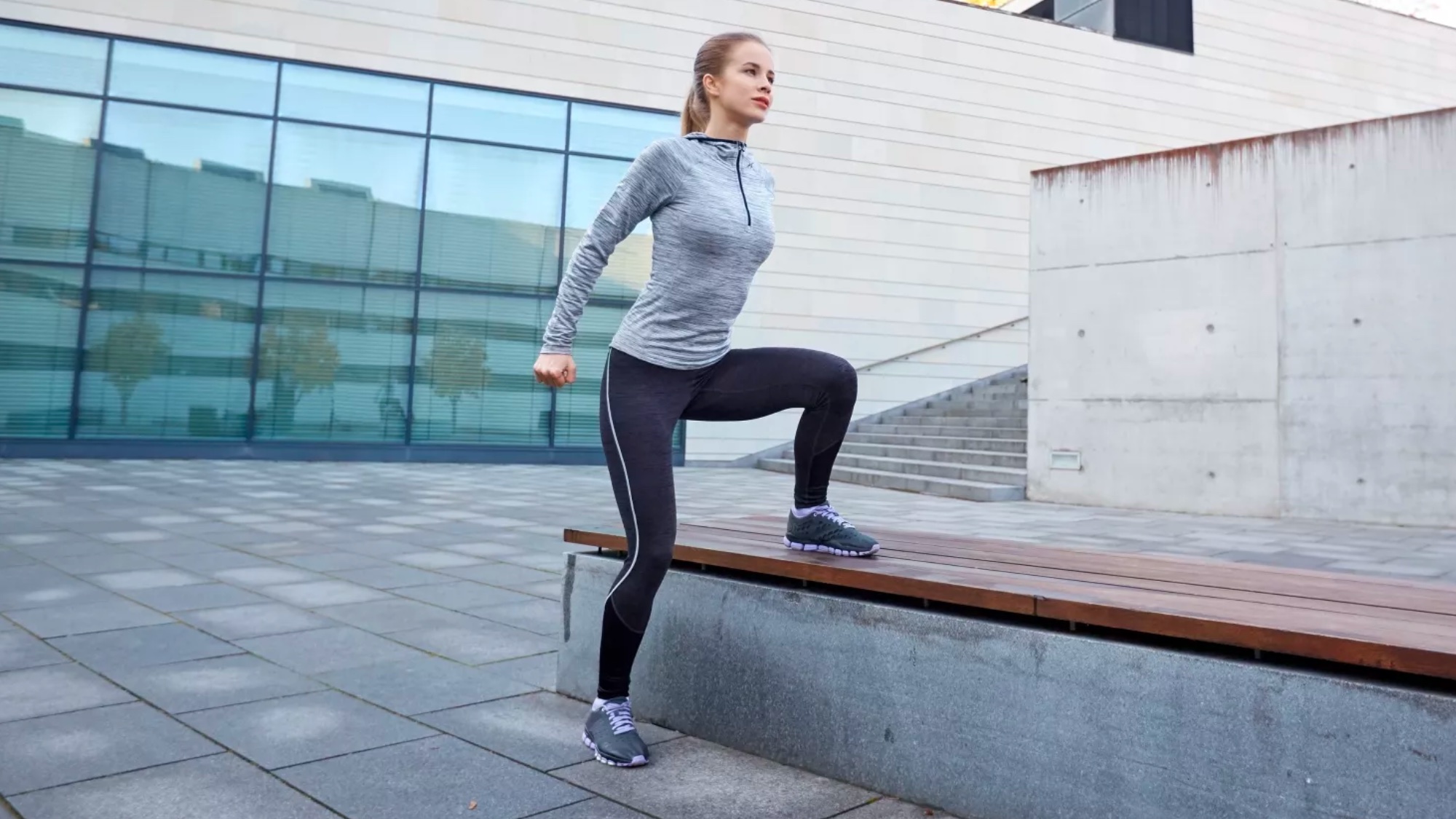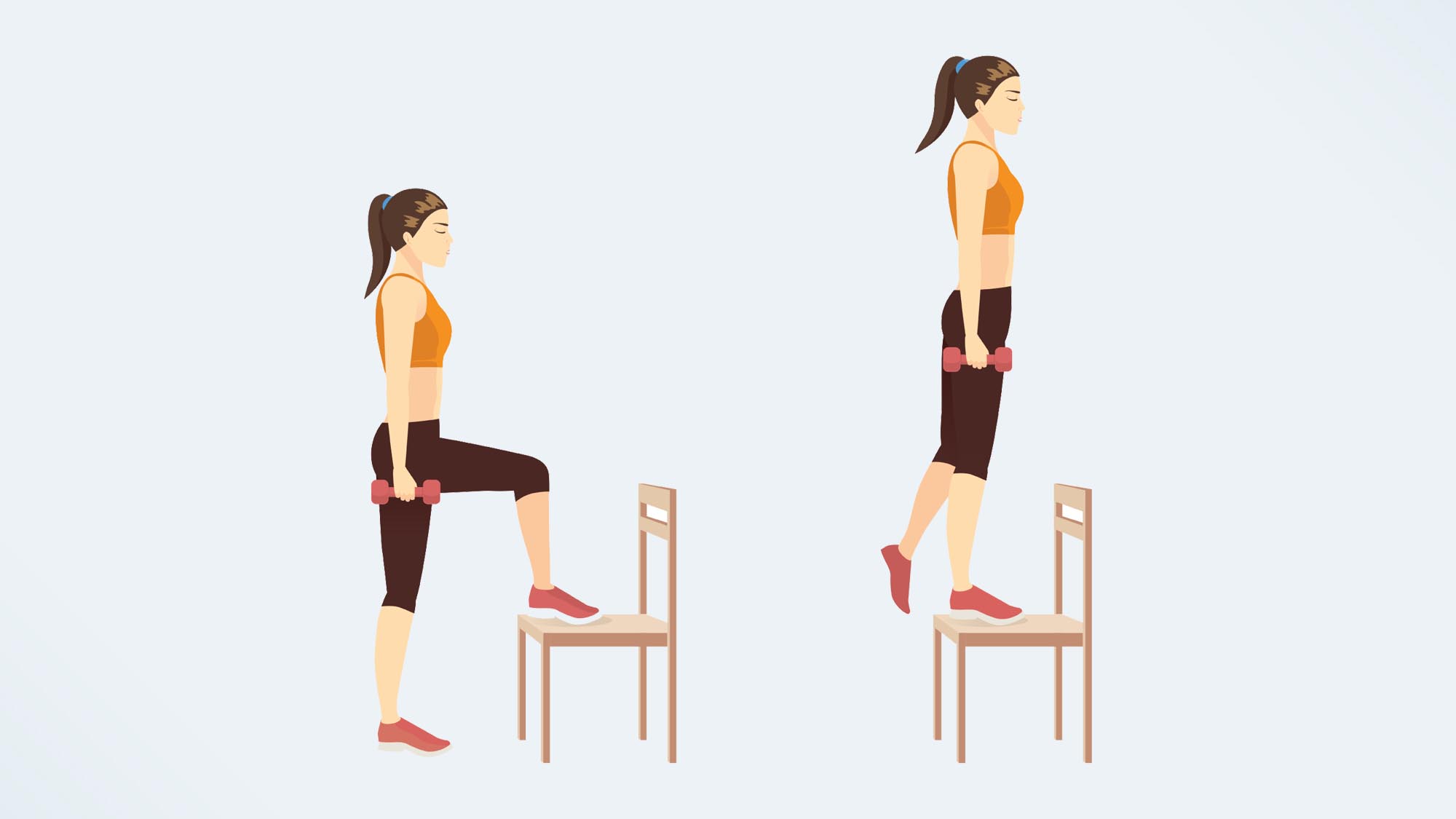I did 50 lateral step-ups every day for a week — here’s what happened
Are lateral step-ups the secret to stronger legs?

As a runner, I’m always looking for new ways to improve my leg strength. Sculpting strong legs can help runners get faster and avoid injuries on the run. One study, published in the Journal of Strength and Conditioning Research found that 40 weeks of strength training helped distance runners improve their VO2 max (the amount of oxygen your body uses while exercising), and run more efficiently.
As a fitness editor, I love nothing more than diving into a workout challenge, and next up on my list was lateral step-ups. A variation to the traditional step-up, which works on your quads, glutes, calves, and hamstrings (here’s how to do a weighted step-up, and the variations to try), lateral step-ups also work your hip flexor muscles.
Another huge benefit of lateral step-ups is that it’s a unilateral exercise, meaning you’re working on strengthening one leg at a time. This means you’ll quickly be able to see any imbalances in the body — we often have one leg that is stronger than the other, and the step-ups might feel easier on one side.
But what would happen if I added 50 weighted lateral step-ups to my routine for a week? Is this an exercise every runner should have in his or her repertoire? Read on to find out more.
How to do a lateral step-up
To do a lateral step-up, start by standing next to a box, bench, or step. If you’re new to this move, avoid using too high a box at the beginning — it should be lower than your knee height to start.
Standing next to the step, place one foot on it, with the other on the floor. Using the leg on the step, push through your foot, engage your glutes and core, and lift your leg off the floor so your feet are at the same level. Slowly return to the starting position, landing softly down on the floor on the ball of your foot. Repeat all your reps on one side before switching legs.

As with all exercises, if you’re a complete beginner, or you’re returning to exercise following an injury, it’s a good idea to chat with a personal trainer before adding reps, or weight to this exercise. Moving with bad form can put you at risk of getting injured. It’s also worth noting that it’s definitely not recommended to do lower body workouts every single day — I did for this challenge, but it’s not a normal part of my workout routine.
Sign up to get the BEST of Tom's Guide direct to your inbox.
Get instant access to breaking news, the hottest reviews, great deals and helpful tips.
I did lateral step-ups every day for a week — here’s what happened
So what would happen if I did 50 lateral step-ups a day for a week? I grabbed a step, and a set of dumbbells (check out the best adjustable dumbbells for working out at home here), and got to work. Here’s what I learned:
One leg was definitely stronger than the other
As mentioned in the intro, one of the benefits of lateral step-ups is that you are working one leg at a time, helping highlight imbalances in the body and preventing the dominant side of your body from overtraining.
I know from experience my right leg is stronger than my left — I’m right-handed and often lead with my right leg when running, and the same applied here. I found I was more balanced on my right side, and found it much harder to perform the exercises when I was leading with my left leg.
I asked a personal trainer to check out my form, and she said while it was completely normal to have one leg a little weaker than the other, I was doing the right thing by focusing on unilateral exercises like this to strengthen my left leg. By the end of the week, I definitely felt more confident on my left side.
She also noted that this exercise is one that’s easy to get wrong — it’s tempting to push from the leg that’s on the floor, but this can cause ankle stress. The movement must come from the leg on the bench.
I felt my core working
I often fall into a bit of a rhythm with these workout challenges but found I really had to concentrate on this move and move slowly, and with control. The descent is as important as the ascent, and I found if I didn’t keep my core engaged, I’d crash back down to the floor, especially if I was using dumbbells. This can put stress on the foot, ankle, knee, and lower back, so is definitely something to avoid.
I had to think about this exercise
After getting a personal trainer to watch my form, she also noted that I sometimes used the momentum to rock myself forward as I lifted my leg. She got me to think about staying grounded on the step, and only moving upwards. Leaning forward makes the move easier, as it removes the load from your quads. However, leaning forward is not good for your lower back, so think about keeping your torso upright during this exercise.
Normally these week-long challenges follow a similar pattern — I get super bored by day three, and have to come up with new ways to mix up the exercise to keep it interesting. This wasn’t the case here. Sure, it wasn’t the most exciting finisher to my workouts or runs, but I had to focus, and I worked on increasing the weight of my dumbbells slightly each time.
Of course, seven days isn’t anywhere near long enough to build muscle, but I did find that by the end of the week, I felt more confident on my left side. I’ll definitely be keeping these in my leg day sessions as I gear up to the London Marathon this Spring, I’m just glad I don’t have to do another 50 tomorrow morning.
Looking for more leg day inspiration? Read what happened when our fitness writer did 60 leg extensions every day for a week, plus this 7-move kettlebell leg workout that strengthens your lower body.
More from Tom’s Guide

Jane McGuire is Tom's Guide's Fitness editor, which means she looks after everything fitness related - from running gear to yoga mats. An avid runner, Jane has tested and reviewed fitness products for the past five years, so knows what to look for when finding a good running watch or a pair of shorts with pockets big enough for your smartphone. When she's not pounding the pavements, you'll find Jane striding round the Surrey Hills, taking far too many photos of her puppy.
